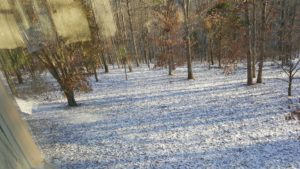
Feb 10, 1948. A beautiful, Spring-like day in southwestern Kansas. That evening, three young people headed from Meade to Fowler, adjacent towns between Dodge City and Fowler in Meade County, to attend a dinner among friends. Alas, weather predictions being what they were in 1948, they didn’t know a massive blizzard was just over the horizon. It started snowing while they were eating dinner. Later, around 10 p,m., the three decided to drive the 10 miles back to Meade. They didn’t make it; all three perished in the blizzard.
Saturday just passed was the 69th anniversary of when the first of the bodies was found. I think. Records aren’t clear, memories of things that old are few and fading. Most likely the three died on the 11th, though their bodies might not have been found until the 12th or 13th.

Two of those who died are the younger sisters of my mother-in-law, Esther Barnes. I had heard bits and pieces of the story over the years. About 18 months ago I asked Esther if she would talk with me about it, and let me write the story for the Meade Historical Society website. She said yes, and I interviewed her in our house over a couple of days. It took me a few months to complete and sent to the Historical Society for them to upload. You can read it here. If for some reason that link doesn’t work for you (looks funny to me), try this for the index and click through to the story.
When I interviewed Esther it was 67 years after the event. I knew it would be painful for her, and it was. But she gave me the details she knew about, most of which she heard from someone. She lived in Fowler at the time, newly married and with a 9 month old son. They had no phone, so she only heard about it days later as the news got around.

Saturday was the 69th anniversary of that event. At the supper table, Esther said, “I still think about the girls,” by which she meant the sisters. Several times during our meal she teared up. 69 years, and still the mourning goes on.
I understand this. It’s been 51 years since my mother’s death, and I still think of her most days, and wonder what life would have been like if she hadn’t had the terrible illnesses and died from them at age 46. It certainly would have been different. Yes, the years have deadened the mourning some, but it’s still there.
I’m not sure there’s really a point to this post. It’s just something that I want to share.
Oh, if you get to the Meade Historical Society site, you’ll notice the article is listed at the “Buzzard of 1948”. I just notice that, and will ask them to fix it. If you read the article there, you’ll find a number of typos and an some awkward formatting. I remember fixing those, so I must have sent them the wrong file, because I remember fixing those items. Just suffer through them. I’ll find the right file and send it for re-uploading.


